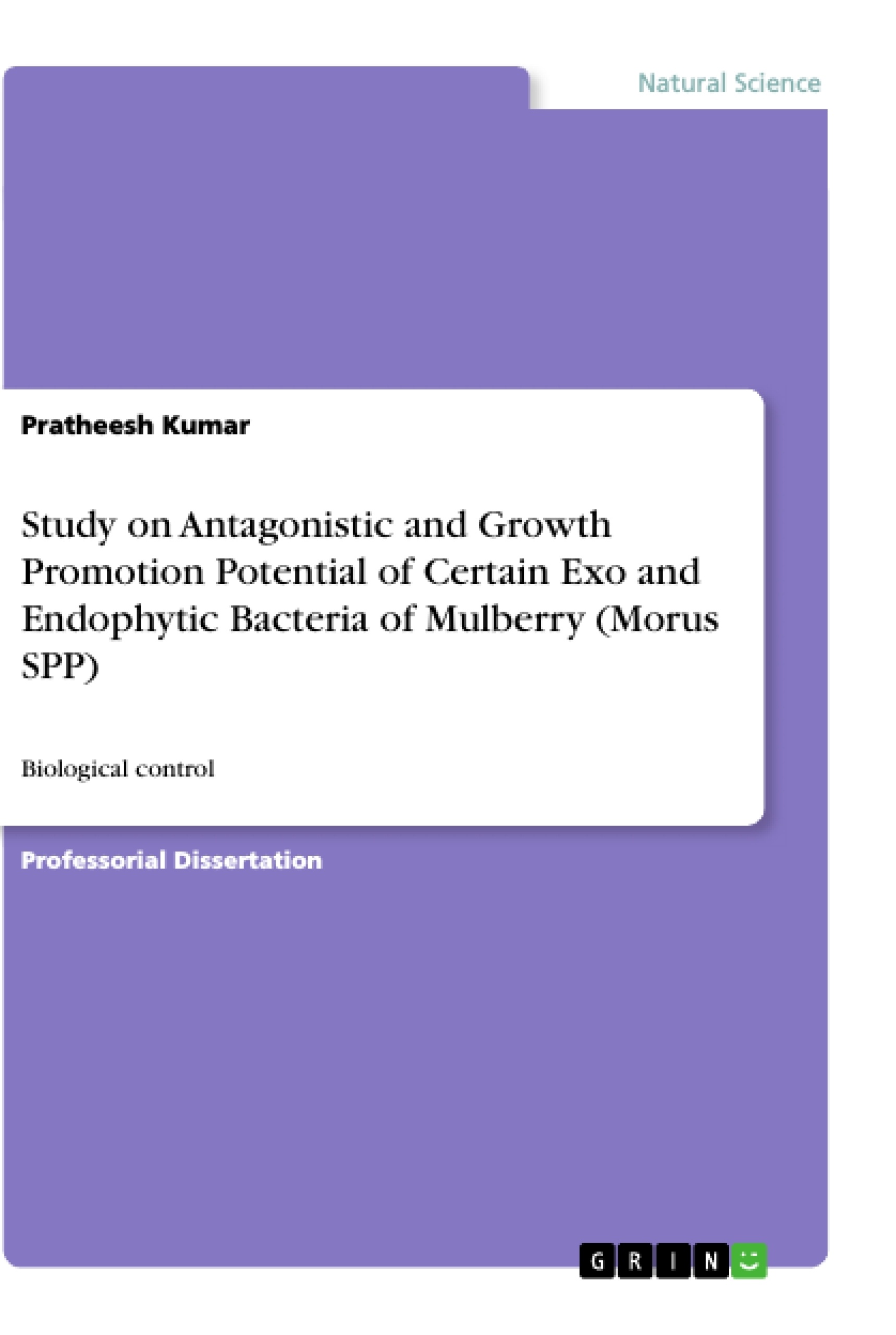In India, sericulture has started thousands of years ago and over the years silk has become an inseparable part of Indian culture and tradition. It is also one of the highest employment providers by combining both agriculture and industry. India is the second largest producer in silk in the world and process the distinction of producer of all the 4 varieties of commercial silk namely, mulberry silk (Bombyx mori), eri silk (Samia ricini), tasar silk (Antheraea mylitta) and muga silk (Antheraea assamensis). Among these 4 varieties of silk produced, mulberry accounts for 75%, tasar 7%, eri 17% and muga 1% of total raw silk production. The major silk producing states in India are Karnataka, Andhra Pradesh, Tamil Nadu, West Bengal and Jammu & Kashmir. The raw silk production of mulberry silkworm shows increasing trend during the last decade due to development of high yielding mulberry varieties and silkworm breeds coupled with technological innovation in cultivation and rearing practices. Natural silk is unique with its own importance, elegance and luster, natural silk is comfortable to wear and good for health. Silk is resistance against too high temperature. The elegant feature of silk thread is due to its fine luster and soft touch.
Inhaltsverzeichnis (Table of Contents)
- INTRODUCTION
- REVIEW OF LITERATURE
- METERIALS AND METHODS
- RESULTS
- DISCUSSION
- SUMMARY AND CONCLUSION
- BIBLIOGRAPHY
Zielsetzung und Themenschwerpunkte (Objectives and Key Themes)
This dissertation investigates the antagonistic and growth-promoting potential of certain exo and endophytic bacteria isolated from mulberry (Morus spp.). The study aims to identify and characterize these bacteria, evaluating their effectiveness in controlling mulberry diseases and promoting plant growth.
- Isolation and identification of exo and endophytic bacteria from mulberry.
- Evaluation of antagonistic activity of isolated bacteria against mulberry pathogens.
- Assessment of growth-promoting potential of isolated bacteria on mulberry.
- Characterization of potential biocontrol and growth-promoting agents.
- Exploring the potential use of these bacteria for sustainable mulberry cultivation.
Zusammenfassung der Kapitel (Chapter Summaries)
- Introduction: This chapter provides an overview of mulberry cultivation and its significance in the sericulture industry. It highlights the challenges posed by various diseases and the importance of sustainable pest management strategies. The chapter introduces the concept of biocontrol using microbial agents and discusses the potential of exo and endophytic bacteria in this regard.
- Review of Literature: This chapter reviews relevant literature on the antagonistic and growth-promoting activities of exo and endophytic bacteria, focusing on their applications in agriculture and particularly in mulberry cultivation. It examines the mechanisms involved in biocontrol and growth promotion, highlighting the potential of these bacteria as effective biocontrol agents.
- Materials and Methods: This chapter outlines the detailed methodologies employed in the study, including the procedures for isolating, identifying, and characterizing the bacteria. It describes the experiments conducted to evaluate the antagonistic and growth-promoting potential of the isolated strains, as well as the statistical analysis used to interpret the results.
- Results: This chapter presents the findings of the study, showcasing the results of the experiments conducted to assess the antagonistic and growth-promoting activities of the bacteria. It includes detailed descriptions of the isolated strains, their identification, and their effects on mulberry pathogens and plant growth.
- Discussion: This chapter analyzes and interprets the results of the study, discussing the significance of the findings and their implications for sustainable mulberry cultivation. It examines the mechanisms involved in biocontrol and growth promotion, highlighting the potential of the identified bacteria as effective biocontrol agents and their contribution to sustainable agriculture.
Schlüsselwörter (Keywords)
The core keywords of this dissertation encompass the exploration of exo and endophytic bacteria associated with mulberry (Morus spp.), their potential as biocontrol agents against mulberry pathogens, and their ability to promote plant growth. Key concepts include isolation, identification, antagonistic activity, growth promotion, biocontrol, sustainable agriculture, and sericulture.
- Citation du texte
- Pratheesh Kumar (Auteur), 2018, Study on Antagonistic and Growth Promotion Potential of Certain Exo and Endophytic Bacteria of Mulberry (Morus SPP), Munich, GRIN Verlag, https://www.grin.com/document/490001




